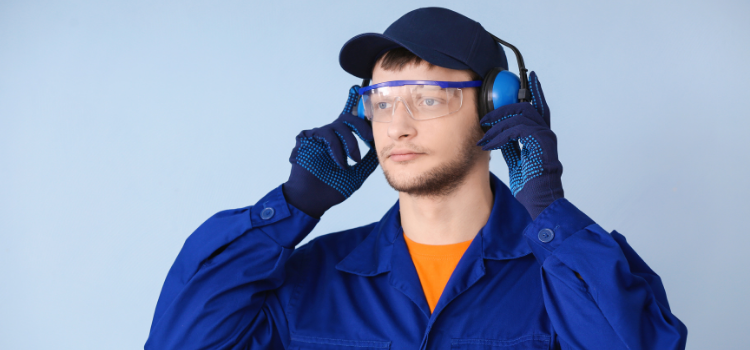How to Protect Your Ears and Eyes at the Logging Job SitePosted: 2021-03-02
Working at a logging job site is undoubtedly one of the most dangerous occupations today. Some health and safety risks are associated with logging operations, including distracted driving (mobile equipment), machinery danger zone infractions, working directly on public access roads, lifting logs or trees, inexperience, and fatigue-induced incidents. Logging activities involve the use of chainsaws, which generate sounds as loud as 120 decibels, which is 32 times louder than a conversation. Exposure to such noise levels can cause long-term hearing loss. Also, the chain moves at 55-60 miles per hour or about 88 feet per second. The teeth on the chain are engineered to remove material and rip out wood fragments. Flying debris can easily get into your face and eyes and cause serious damage. For this reason, you should protect your ears and eyes while working outdoors. Protecting Your Ears Your ears don’t get damaged in an instant. Instead, it is the repeated exposure to loud noises at work against your middle and ear that disrupts their normal function. Most of the time, other people are the first to notice your decline in hearing before you do. They notice you are missing parts of conversations, and getting your attention may seem like a challenge. According to ear experts, pain and discomfort may not begin until 110 to 120 decibels. This is why people do not often think about protecting their ears unless they feel the pain. Truth is, sounds at 85 decibels and above can start to damage your ears, making it necessary to pay attention to the noise level you are being exposed to. Experts say that it takes an hour for 94 decibels to wear out our hearing, but 2 minutes are enough to do it at 109 decibels. Regulatory agencies require hearing protection when 85 decibels are exceeded. Because working at a logging job site exposes you to noises as loud as 120 dB every day, you should therefore ear protection. Most modern chainsaw designs have noise reduction features. However, such muffling options are intended for your neighbors, but not for you. Since you are the one operating the machine, it puts you at the most risk. To reduce your exposure to extremely loud noises, wear ear muffs, which can restore your hearing to the 80-85 dB range. When choosing ear muffs, take note of the noise reduction rating (NRR). This is the amount of decibel reduction provided by the earmuffs. You need a pair of muffs with an NRR rating of 25 dB to reduce the noise below the 85 dB level. However, keep in mind to choose a hearing protector that provides just the right amount of protection. Pick one that enables you to still hear people, trees cracking, and other important sounds while the chainsaw is running. Protecting Your Eyes Similarly, your eyes are at risk of being damaged while operating a chainsaw. Therefore, you should always wear eye protection at work. Face guards and eyeglasses or sunglasses aren’t enough to protect your eyes against flying objects. Standard safety glasses are designed to protect you not only from debris and flying particles, but also against excessive light. Look for eye protection that meets the ANSI’s (American National Standards Institute) requirements. Currently, the ANSI rating for approved eyewear is set at Z87.1. If you’re wearing prescription glasses, ask your optometrist to provide you with safety glasses that meet your needs. Safety goggles can also help protect your eyes from many hazards, such as dust, sand, and debris. Goggles come with either perforated, port-vented, or non-vented frames. Some goggles have single lenses that provide the same level of protection, which can be worn in conjunction with prescription glasses. This setup ensures protection as well as proper vision. Your ears and eyes are essential senses that enable you to work and stay productive. However, they are very delicate organs that need protection, especially when working in dangerous environments, such as a logging job site. Consider the tips we provided in this article and increase your safety in the workplace.
| |






.jpg)
